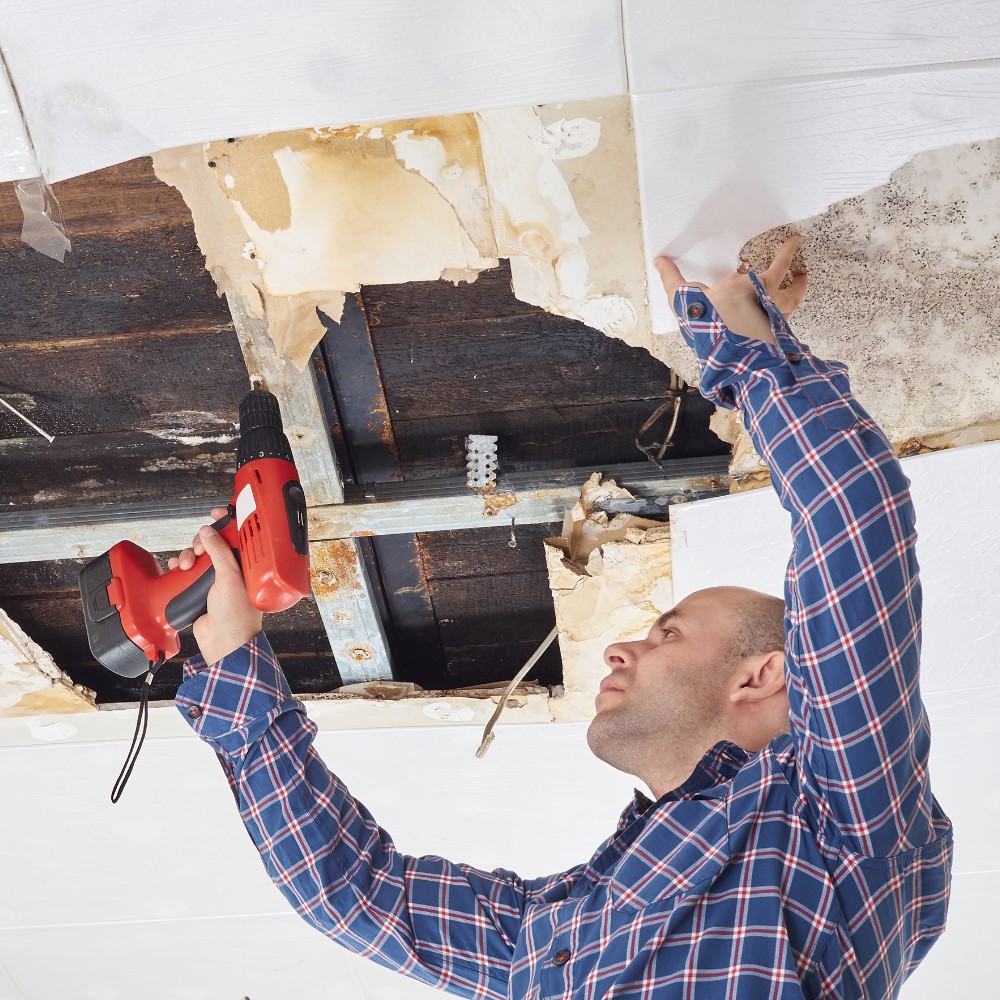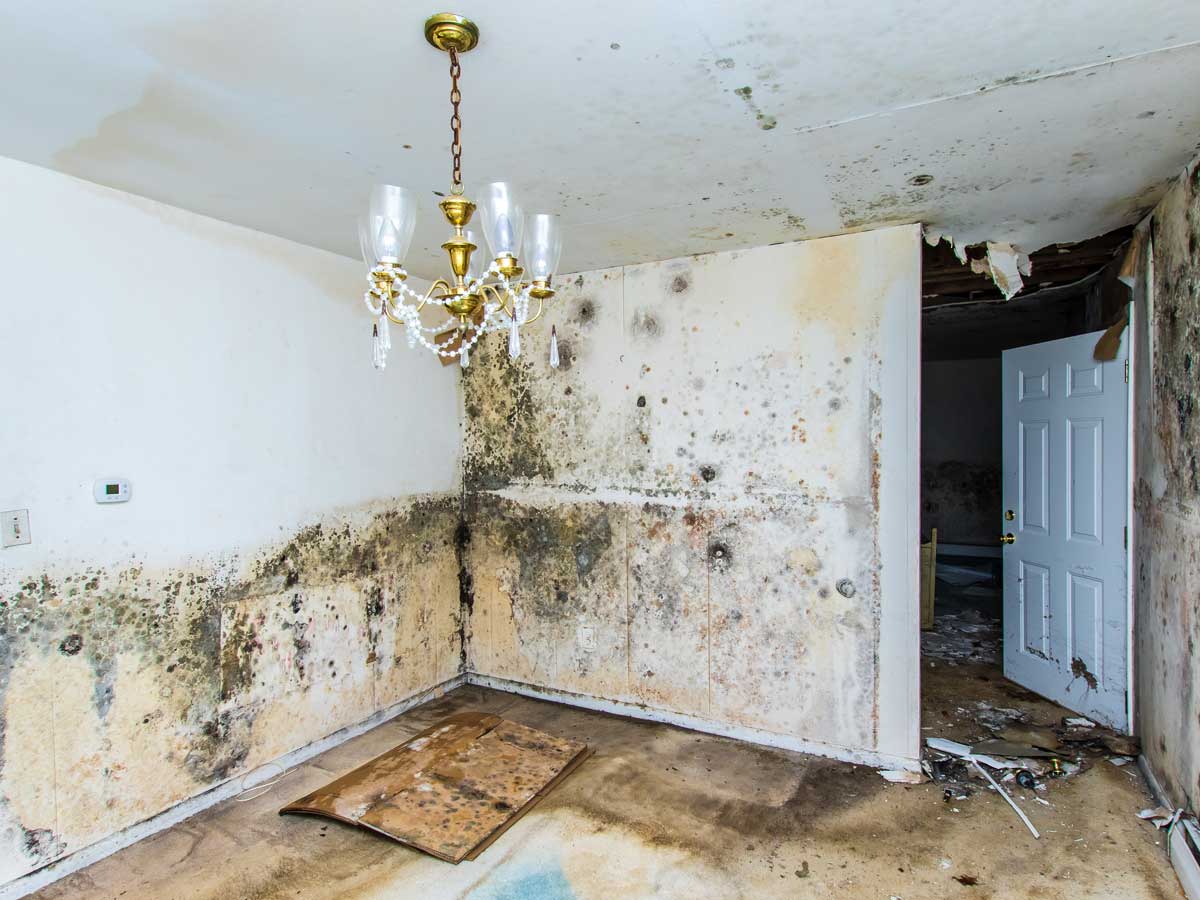Leading Water Mitigation Company Offering Fast and Efficient Solutions
Leading Water Mitigation Company Offering Fast and Efficient Solutions
Blog Article
The Process of Water Damages Cleanup: Guaranteeing Your Home Is Restored Efficiently
Water damage can be a difficult difficulty for home owners, requiring a thorough and structured clean-up procedure to restore security and performance. damage restoration services. Following this, efficient water extraction strategies play a critical duty in reducing further damage.
Analyzing the Damage
Upon discovering water damage, the very first step is to extensively evaluate the level of the impact. This initial examination is crucial, as it assists establish the necessary steps for efficient cleaning and restoration. Begin by examining the influenced locations, including walls, ceilings, floors, and personal possessions, to recognize the resource of the water breach, whether from flooding, leakages, or condensation.
Recording the damage is vital for both insurance policy cases and planning repair initiatives - damage restoration services. Usage photos and composed notes to record the extent of the damages, noting any type of afflicted architectural aspects and materials. Pay unique interest to areas that may not be promptly noticeable, such as behind walls and under rugs, as concealed dampness can lead to further complications, consisting of mold and mildew development
In addition, examine the timeline of the water direct exposure. The longer the products continue to be damp, the higher the potential for damages. Recognizing the period of direct exposure will notify the seriousness of remediation initiatives. Eventually, a thorough analysis lays the foundation for a successful water damages cleanup procedure, ensuring that all influenced areas are resolved properly and completely.
Water Extraction Strategies

Professionals generally employ submersible pumps for larger volumes of water, which can rapidly minimize flooding in cellars or various other influenced locations. For smaller amounts, wet/dry vacuum cleaners are usually made use of to draw out residual dampness from carpetings and tough surface areas. Additionally, using portable extractors enables targeted removal in constrained rooms or areas with delicate products.
In circumstances of polluted water, such as sewage or floodwater, progressed extraction methods may entail making use of biohazard equipment to ensure security and compliance with health guidelines. High-powered extraction devices are vital in lessening water retention in structural materials, which can lead to mold and mildew growth and architectural degeneration otherwise dealt with without delay.
Eventually, the performance of water extraction strategies plays an essential role in the general success of the water damages clean-up process, preparing for succeeding remediation initiatives.
Drying and Dehumidification
When standing water has actually been efficiently drawn out, the following vital stage in the water damage clean-up procedure is drying and dehumidification. This action is essential to stop more damages and mold growth, which can take place within 24 to 48 hours in wet environments.
To accomplish reliable drying out, specific tools such as industrial-grade air moving companies and dehumidifiers is employed. Air movers flow air across wet surfaces, improving evaporation rates, while dehumidifiers minimize moisture degrees airborne, promoting a conducive atmosphere for drying out. The mix of these devices guarantees that wetness is attracted out from wall surfaces, floors, and home furnishings, allowing them to dry thoroughly.
It is necessary to check the drying out procedure carefully. Experts usually use moisture meters to assess the dampness web content in various materials, ensuring that all impacted areas get to appropriate dryness levels. This precise method helps to stop hidden dampness pockets that can bring about architectural damage or harmful mold and mildew development.

Cleansing and Sanitizing
After the drying and dehumidification stage is full, the next important action in water damages cleanup is cleaning up and disinfecting the affected areas. This procedure is important to protect against the development of mold, germs, and other microorganisms that grow in wet environments.
The cleansing stage generally includes eliminating any type of particles, dirt, and contaminants from surfaces utilizing specialized cleaning up representatives. For tough surface areas, a mix of soap and water or business cleansing flood damage insurance products is typically utilized. Soft materials, such as upholstery and rugs, might call for extra extensive cleansing methods, including heavy steam cleaning or deep extraction strategies, to ensure detailed hygiene.

Sterilizing follows cleansing, using EPA-approved disinfectants to remove unsafe microorganisms. This step is crucial, especially in areas that might have entered into contact with floodwaters or sewer, as these sources can position severe wellness threats.
Additionally, it is essential to address any kind of staying smells, which might require making use of odor neutralizers or advanced techniques like ozone therapy. Proper cleansing and sterilizing not only recover the security and health of your home however additionally lay the foundation for effective restoration and fixings in subsequent phases of the water damage cleaning process.
Reconstruction and Repair Work

As soon as the analysis is total, reconstruction efforts can start. Additionally, floor covering might require comparable interest, depending on the degree of water exposure.
It is essential to involve seasoned restoration experts throughout this procedure, as they possess the proficiency to deal with complicated fixings efficiently. They can aid mitigate prospective future problems, such as mold and mildew development or architectural instability, therefore guaranteeing a habitable and safe living atmosphere. Inevitably, reliable remediation and repair work restore the home's stability and boost its general value.
Final Thought
To conclude, the process of water damages cleanup is important site here for recovering a home to its pre-damage condition. Each phase, from analyzing the damages to executing effective water removal techniques, adhered to by detailed drying, sterilizing, and necessary fixings, plays an important function in making sure security and compliance with building requirements. Efficient execution of these steps not just minimizes instant damage but also boosts the lasting integrity and value of the home.
Water damages can be a challenging obstacle for property owners, requiring a structured and precise cleaning procedure to restore security and performance. Inevitably, an extensive evaluation lays the foundation for an effective water damages cleaning procedure, guaranteeing that all impacted locations are useful content resolved successfully and thoroughly.
Effective water extraction strategies are crucial in minimizing damages and stopping further problems following a water breach event.In verdict, the process of water damage clean-up is essential for restoring a home to its pre-damage condition. Each phase, from examining the damage to carrying out efficient water removal methods, adhered to by comprehensive drying out, sterilizing, and needed repairs, plays an important function in guaranteeing safety and security and compliance with structure criteria.
Report this page